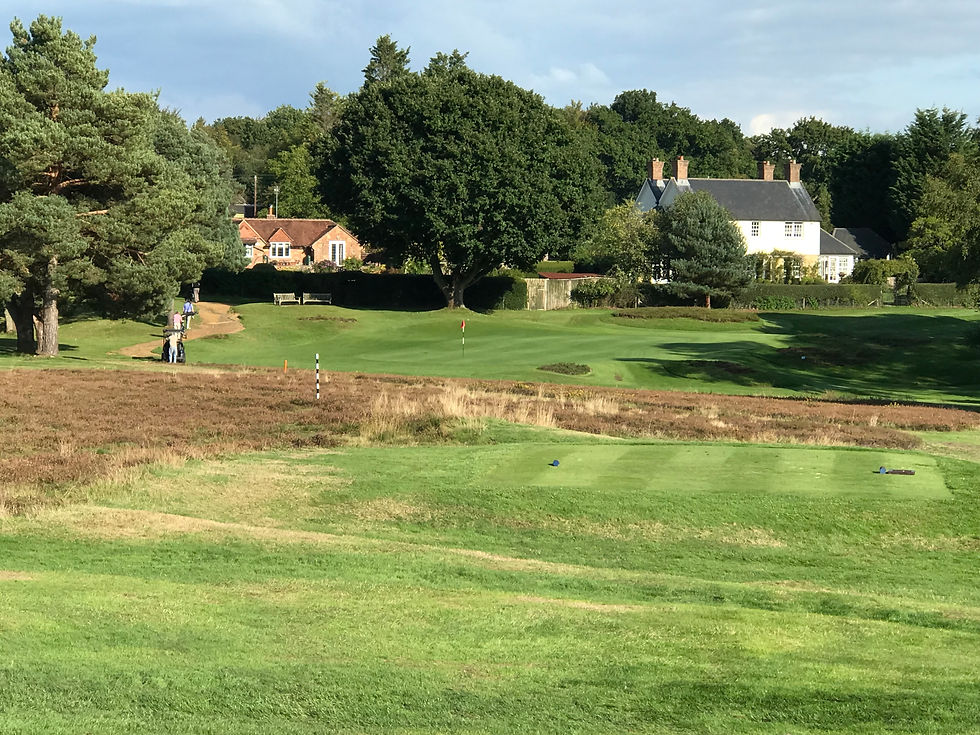Piltdown
- Neil White
- Sep 16, 2022
- 3 min read

Is this the quaintest clubhouse in the country and, does £50 with a county card represent the best value round in England’s top 100? And are there really no bunkers?
Piltdown is the site of one of the most notorious hoaxes in history but I can verify that what you see at its golf club is exactly what you get.
The village became world-famous in 1912 after the sensational discovery of a million-year-old skull of an ape man a few hundred yards behind the golf club’s sixth green.
It was more than 40 years before the claim of the missing link became discredited.

Piltdown is a fascinating golf club, wearing this history and other traditions on its sleeve while also having incorporated much change over the years.
Its first point of difference is the lack of bunkers, despite sand being underfoot on many of the fairways.
Apparently, sand traps did exist in its original design but in 1924 they had fallen into disrepair – so it was agreed to remove them because it was deemed the heather made the course tough enough.

Mrs W and I would concur. We were warned to keep out of the purple stuff as we stood on the first tee and soon realised why.
The opening hole is across the road from the clubhouse, outside seating area and practice putting green.
It is a bending par-four with the course boundary on the right and tangly stuff emerging from the left. Its green has subtle borrows in common with many at Piltdown, so accuracy of approach is important to avoid three-putting.
The second hole is the only par-five on the men’s card (the women have four) and where I succumbed to the heather, playing my first air shot in years as I failed to remember past experiences and tried to blast my ball out.

From then on, I scrambled for scores on the front nine as calluna-avoidance and course strategy became key.
I was certainly happy with a bogey on the third, a long, dog-leg par four over a stream and heather to a raised green. A fine hole.
That was tough but a mere aperitif before the fourth – one of the most memorable holes on our travels.

This is a 200-yard par three over two wide tranches of heather down to sunken green with trees encroaching from the left.
The only possible bail-out is a slither of fairway between the tangly stuff. I was mighty pleased with a four. It was Mrs W’s first encounter with the heather. It did not end well.
Purple stuff can wreck cards over the next few holes with the fifth demanding a decent carry off the tee and the sixth requiring the same and a big decision over the approach because of a band of heather about fifty yards in front of it.

The shorter par-four ninth is where the opportunities begin to open up at Piltdown. Again, heather is abundant but if it can be cleared with the tee shot a lofted iron should find the green.
That is followed by a fairly straightforward downhill par-three with little protection. It yielded a nice little two.

My day’s highlight came on the 12th where my drive left me with a pitch which landed five feet from the flag and prompted applause from the fourball on the adjacent tee.
The 13th is a smashing dogleg which demands a second shot over you-know-what into a sunken green. The brave may come unstuck. I did.

I would say the 17th is the most difficult of Piltdown’s holes, demanding a drive over a thick tall bush or a very precise lay-up in front of it.
Even if that is negotiated, a very long second shot awaits with more heather lurking for those who drift off target.

I was blown away by Piltdown. It may be a par 68 for men but it is certainly not easy. However, I did find that once I had found a rhythm of placing rather than smashing, rewards were forthcoming.
Some say that a course without bunkers is somehow inferior but I believe the concentration on heather gives Piltdown a rare identity. I would certainly like to return.





Comments